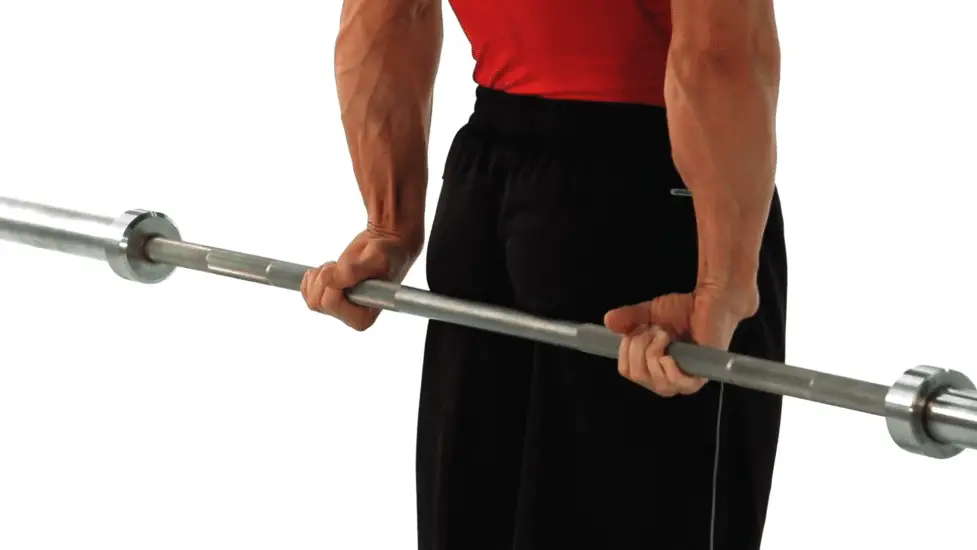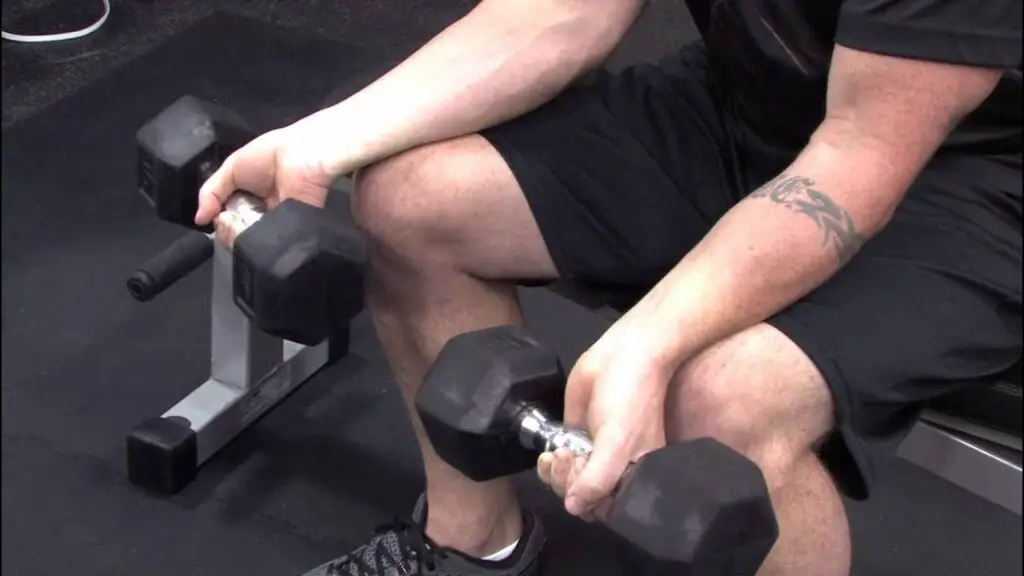Introduction
How To Train Grip Strength Without Equipment: In the pursuit of overall fitness and functional strength, one often encounters the importance of grip strength. A strong grip not only enhances performance in activities that demand it, such as weightlifting and rock climbing, but also supports everyday tasks like carrying groceries or opening jars. While gym equipment like dumbbells and barbells can be effective for developing grip balance strength, they are by no means essential. There exists a diverse array of exercises and techniques that can help you train and improve your grip strength without the need for specialized equipment. Whether you’re looking to enhance your athletic prowess or simply want to bolster your hand and forearm strength, this guide will introduce you to a range of creative and effective methods for cultivating grip strength without relying on traditional gym gear. By harnessing the power of bodyweight exercises, everyday objects, and unique training strategies, you can embark on a journey to fortify your grip and unlock a world of functional strength possibilities.
In the realm of physical fitness, certain attributes stand out as foundational pillars of strength and functionality. Among these, grip strength reigns supreme. The ability to maintain a powerful and resilient grip not only influences specific activities like weightlifting and sports, but it also carries over into countless aspects of daily life, from opening stubborn jars to maintaining control during physical tasks. While commercial gyms offer an array of specialized equipment to target grip strength, access to such resources may not always be convenient or feasible. The good news is that a lack of traditional gym equipment should never be a barrier to achieving remarkable grip strength.
This guide is your gateway to discovering a plethora of innovative and accessible methods for enhancing grip strength without relying on traditional tools. By delving into the world of bodyweight exercises, exploring the potential of common household items, and tapping into unconventional training techniques, you can embark on a journey of empowerment. Whether you’re an athlete aiming to gain a competitive edge or someone seeking functional strength for everyday challenges, these equipment-free grip strengthening strategies will equip you with the tools you need to succeed. Prepare to revolutionize your approach to training as you uncover the secrets to cultivating an iron grip that will serve you well in all your physical pursuits.

Why is my grip strength so weak?
In most cases, waning grip strength is a result of aging or a condition such as carpal tunnel syndrome. However, sudden muscle weakness can be a sign of a medical emergency if it’s due to a stroke. Strokes can cause abrupt muscle weakness, loss of facial movement, trouble speaking, dizziness, and mental confusion.
Sedentary Lifestyle: Spending long hours sitting or not engaging in regular physical activity can lead to muscle weakness, including in the hands and forearms. Lack of movement can result in reduced muscle mass and strength, ultimately affecting your grip.
Lack of Specific Training: Just like any other muscle group, the hands and forearms require targeted training to become stronger. If you haven’t been intentionally working on grip strength, it’s likely to remain underdeveloped.
Aging: As we age, there is a natural decline in muscle mass and strength, known as sarcopenia. This process affects all muscle groups, including those responsible for grip strength.
Medical Conditions: Certain medical conditions such as arthritis, carpal tunnel syndrome, and neurological disorders can impact grip strength. These conditions can affect the joints, tendons, and nerves involved in gripping.
Does handgrip increase veins?
Hand grippers do indeed play a role in developing vascularity, but not without a little help from our good friend, science. You see, when you use hand grippers to work your forearm muscles, you’re also increasing blood flow to those areas. As your muscles grow and blood flow increases, your veins become more visible.
The visibility of veins is influenced by several factors, including body fat percentage, genetics, hydration levels, and blood flow. Lower body fat levels and well-hydrated skin can contribute to veins being more visible on the surface. Additionally, increased blood flow to the muscles can cause veins to become more pronounced.
Handgrip training, which involves squeezing an object with your hand, can increase blood flow to the forearm muscles and surrounding areas. When you grip an object, the muscles in your hands and forearms contract, causing blood vessels to dilate to accommodate the increased demand for oxygen and nutrients. This increased blood flow can cause veins to become temporarily more visible, especially if you have a lower body fat percentage.
Muscle definition, which often comes with regular strength training and low body fat, can also contribute to vein visibility. As muscles become more defined, they push against the skin, creating a tighter appearance. This can further accentuate veins and their visibility.
Genetics play a significant role in the visibility of veins. Some individuals naturally have more prominent veins due to the structure of their veins and the layers of their skin. Genetics determine the patterns and locations of veins, which is why some people naturally have more visible veins even without specific training.
What increases grip?
Tips to Improve Grip Strength
“Holding things of different sizes can help,” says Malek. If you’re working out, try using different grips with weight, including open and closed. Focusing specifically on strengthening the muscles in your lower arm and throughout your upper body will also help, says Malek.
Progressive Resistance Training
Engaging in progressive resistance training is a fundamental approach to increasing grip strength. This involves gradually increasing the resistance or load you work against. Exercises such as deadlifts, pull-ups, rows, and farmer’s walks directly target the muscles responsible for gripping. Over time, as you challenge these muscles with heavier weights or more intense variations, they adapt and grow stronger.
Targeted Grip Training
Specifically targeting the muscles of the hands and forearms through grip-focused exercises can yield remarkable results. Incorporating exercises like wrist curls, reverse curls, plate pinches, and towel hangs can help isolate and strengthen the muscles responsible for grip.
Hand Strengthening Tools
Utilizing hand strengthening tools like grip trainers, hand grippers, and grip balls can provide targeted resistance and challenge for your grip muscles. These tools are designed to mimic real-life gripping actions, helping you develop functional strength.
Does push ups increase grip strength?
Fingertip push-ups are the exercise of choice of martial arts experts for developing powerful grip strength. Working your way up to a fingertip push-up will require conditioning the muscles in your forearms since these muscles control your fingers.
Push-ups, a classic bodyweight exercise, are renowned for their ability to build upper body strength, particularly targeting the chest, shoulders, and triceps. While push-ups primarily focus on the pushing muscles, you might be wondering: Do push-ups also increase grip strength? The answer lies in understanding the mechanics of the exercise and how it affects various muscle groups, including those related to grip.
Push-ups do engage your grip muscles to a certain extent, but they are not primarily designed as grip-strengthening exercises. The grip in a standard push-up is relatively neutral, with your palms placed flat on the ground, fingers spread, and weight distributed evenly between your hands. As you lower and push your body back up, your grip muscles, along with your wrist stabilizers, contribute to maintaining your hand position and distributing the force.
While push-ups aren’t specifically designed to target grip strength, they do provide a degree of secondary grip activation. Your grip muscles are necessary to stabilize your wrists and maintain the alignment of your hands throughout the movement. This stabilization becomes more pronounced as you engage in more challenging variations of push-ups, such as decline push-ups or push-ups with added resistance.
Is it OK to use hand grippers everyday?
To build hand strength and muscle mass, you should use hand grips for at least 24 hours for two weeks. You need to use hand grips at least 2 hours a day in a day. You should use the hand grips regularly for at least six months to see visible changes.
Your fitness objectives play a crucial role in determining how often you should use hand grippers. If you’re looking to build substantial grip strength, using grippers daily may not be the most effective strategy. Instead, focus on incorporating them into a structured training program that allows for proper recovery.
Like any other muscle group, the muscles in your hands and forearms need time to recover and adapt. Overtraining can lead to fatigue, decreased performance, and even injury. To avoid this, it’s essential to allow these muscles adequate rest between intense gripping sessions.
Rest days are not just for avoiding injury; they are also critical for muscle growth and strength development. During rest, your muscles repair and rebuild, becoming stronger in the process. So, strategically incorporating rest days into your grip training routine can be just as important as the training itself.
Does hand gripper affect height?
The results of this study, showed that anthropometric parameters like weight, height were positively correlated with hand grip muscle strength and height positively correlated with muscle endurance.
Height is primarily determined by genetics. The genes inherited from your parents play a significant role in dictating your potential height. While factors such as nutrition, sleep, and overall health can influence whether you reach your genetic height potential, using hand grippers has no direct impact on these genetic factors.
One common misconception is that certain activities, including using hand grippers, could potentially affect the growth plates in bones, thereby influencing height. Growth plates are areas of developing cartilage at the ends of long bones in children and adolescents. These plates contribute to bone lengthening and, consequently, height growth.
However, activities that do not involve the long bones and their growth plates, such as gripping exercises with hand grippers, do not have a direct influence on height. Growth plates are typically found in bones like the femur, tibia, and humerus, while gripping exercises target the muscles and tendons of the hands and forearms.
While hand grippers don’t have a direct impact on height, they can contribute to overall health and fitness. Engaging in grip-strengthening exercises can enhance hand and forearm strength, which can be beneficial for everyday tasks, sports, and functional fitness. A well-rounded exercise routine that includes grip training can contribute to your overall well-being.
What is normal grip strength?
Grip strength is typically measured in pounds, kilograms, or Newtons by squeezing a type of muscle strength testing equipment, known as a dynamometer, about three times in each hand. The average healthy grip strength for men is a squeeze of about 72.6 pounds while women typically measure around 44 pounds.
Grip strength is the force exerted by the muscles of the hands and forearms when they clasp and squeeze an object. This measure is influenced by the strength of various muscle groups, including the muscles of the fingers, palms, and wrists.
Grip strength is typically measured using a hand dynamometer, a device that gauges the force exerted when a person squeezes the dynamometer’s handles. The measurement is taken in pounds or kilograms and provides an objective assessment of an individual’s grip strength.
Grip strength is not just a measure of hand and forearm strength; it can also reflect an individual’s overall health and functional capacity. Low grip strength has been associated with various health issues, including reduced muscle mass, impaired mobility, and increased risk of mortality.
While understanding normal grip strength ranges is important, it’s equally important to strive for optimal grip strength. Engaging in regular strength training, including exercises that target the hands and forearms, can enhance grip strength. Incorporating exercises like deadlifts, pull-ups, and specific grip exercises can help you develop a robust grip.
Do hand grippers work?
Yes, and here’s why. Just as you would use weights or machines for resistance to strengthen large muscles of the body, such as the glutes and lats, grip strengtheners provide resistance to strengthen the smaller muscles of the hands.
Progressive Overload: To see results, it’s important to gradually increase the resistance of the hand grippers over time. Starting with a gripper that offers moderate resistance and gradually moving to higher resistance levels challenges your muscles and promotes growth.
Variety: While hand grippers are effective, they primarily target specific muscle groups. To ensure a balanced approach to grip training, incorporate other exercises that target different aspects of grip strength, such as pinch grips and thick bar training.
Proper Form: Using hand grippers with proper form is crucial to avoid strain and ensure that the intended muscles are engaged. Squeeze the handles evenly and avoid excessively bending your wrist.
Supplementary Use: Hand grippers work well as supplementary tools within a comprehensive strength training program. Including them as part of a well-rounded routine that addresses overall strength and mobility enhances their effectiveness.

Conclusion
In the realm of physical fitness, where innovation and adaptability are prized, the pursuit of grip strength without the constraints of traditional equipment emerges as a rewarding endeavor. This journey has unveiled a treasure trove of creative techniques and exercises that harness the power of bodyweight, household items, and ingenious training strategies to fortify our grip. As we conclude this guide, the message is clear: our hands and forearms possess immense potential that can be unlocked without the need for specialized tools. By embracing these equipment-free methods, we’ve tapped into a source of functional strength that extends beyond the gym. From conquering challenging physical tasks to enhancing sports performance, the benefits of a robust grip are far-reaching. We’ve learned that a doorknob, a towel, or even a simple hang can become powerful tools in our quest for greater strength.
Remember, consistency and patience are key. Gradually integrating these exercises into your routine will yield impressive results over time. As you progress, you’ll witness the transformation of your grip strength, along with the numerous advantages it brings to your daily life and physical pursuits. So, whether you’re an athlete seeking an edge or an individual striving for enhanced functionality, the path to grip strength lies before you, unburdened by the necessity for equipment. Let the knowledge gained here be your guide as you embark on a journey of empowerment, resilience, and self-discovery. Your hands are your instruments of action – now fortified, capable, and ready to grasp hold of whatever challenges and opportunities come your way. In the realm of fitness, the quest for strength often extends beyond the limits of conventional equipment. Exploring the realm of grip strength without the reliance on specialized tools has opened a doorway to a world of ingenuity and adaptability.
Throughout this guide, we’ve unearthed an array of inventive methods that leverage the potential of our own bodyweight, everyday objects, and innovative techniques to sculpt a formidable grip. As we conclude this journey, it becomes evident that the strength of our grip holds profound significance in both our physical capabilities and our overall quality of life. The versatility of these equipment-free exercises equips us not only for athletic achievements but also for the challenges of daily living – whether it’s carrying heavy bags, navigating obstacles, or engaging in recreational activities. By embracing these techniques with dedication and consistency, we tap into the latent power of our hands and forearms. The door handles, towels, and ledges around us become our training grounds, and every hang, squeeze, and hold becomes an investment in our physical well-being.

